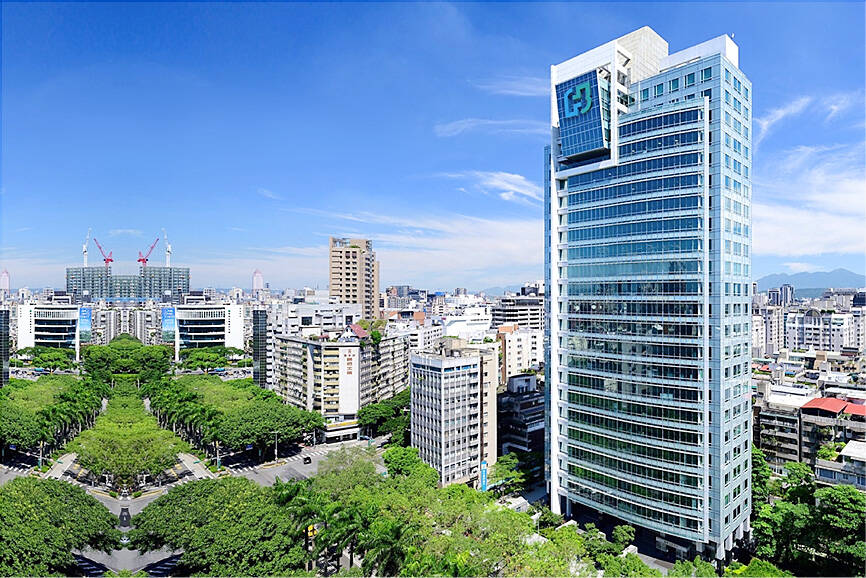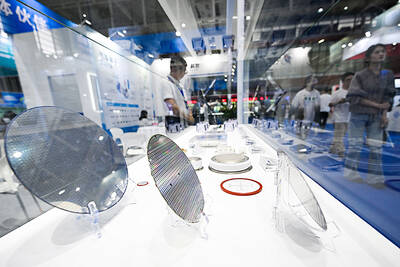Financial conglomerate Fubon Group (富邦集團) was the largest business group in Taiwan last year in terms of total assets, retaining the top spot on an annual local corporate list, Taipei-based credit information company CRIF (中華徵信所) said on Tuesday last week.
In its report on Taiwan’s top 100 business groups based on assets, CRIF said the group, which owns Fubon Financial Holding Co (富邦金控), had NT$12.24 trillion (US$393.37 billion) in total assets last year.
That was up 9.88 percent from a year earlier, as its life and non-life insurance units and securities business, as well as its banking operations in Hong Kong and China continued to grow, CRIF said.

Photo courtesy of Fubon Financial Holding Co
In 2020, Fubon replaced Lin Yuan Group (霖園集團) to become the largest financial group in the country for the first time, and saw its total assets grow to a record high last year, it said.
Lin Yuan, which owns Cathay Financial Holding Co (國泰金控), had NT$11.68 billion in total assets, taking the No. 2 spot, ahead of financial conglomerate CTBC Group (中國信託集團) with NT$7.13 billion; Taiwan Financial Holding Co (臺灣金融控股) with NT$5.99 trillion; Ruentex Group (潤泰集團), which owns insurance and property businesses, with NT$5.66 trillion; and Shin Kong Group (新光集團), which has financial, textile and property development operations, with NT$5.09 trillion, CRIF said.
Hon Hai Technology Group (鴻海科技集團), the world’s largest contract electronics maker, took seventh place with NT$5.07 trillion in total assets, followed by Taiwan Cooperative Financial Holding Co (合庫金控) with NT$4.43 trillion, Mega Financial Holding Co (兆豐金控) with NT$4.17 trillion and Formosa Plastics Group (FPG, 台塑集團) with NT$3.94 trillion, it said.
FPG, which owns flagship entity Formosa Plastics Corp (台塑), reported a 24.48 percent year-on-year increase in total assets last year, moving up two spots from 2020 to return to the top 10, as the COVID-19 pandemic and China’s “zero COVID” policy pushed up petrochemical product prices sharply.
The top 100 business groups in Taiwan reported NT$131.91 trillion in total assets last year, a record high, after rising 10.05 percent from a year earlier, CRIF said, adding that the 100 groups posted a 17.56 percent year-on-year rebound in sales, reversing a slight fall during the previous two years.
Hon Hai, also known as Foxconn Technology Group (富士康科技集團) internationally, generated NT$7.2 trillion in sales last year, up 10.62 percent from a year earlier on the back of solid demand for consumer electronics products and electronic components, CRIF said, adding that it was the first time the group had recorded revenue above NT$7 trillion.
It was the 14th consecutive year that Hon Hai had finished at the top of the sales rankings, it added.
FPG placed second after generating NT$2.27 trillion in revenue last year, ahead of electronics supplier and distributor Mitac-Sysnnex Group (聯華神通集團) with NT$1.92 trillion; Taiwan Semiconductor Manufacturing Co (TSMC, 台積電), the world’s largest contract chipmaker, with NT$1.61 trillion; and contract electronics maker Kinpo-Compal Group (金仁寶集團) with NT$1.40 trillion.
TSMC was the most profitable company in Taiwan last year after raking in NT$598 billion in net profit, followed by FPG with NT$265 billion, shipping and airline conglomerate Evergreen Group (長榮集團) with NT$251 billion, Hon Hai with NT$181 billion and shipping service provider Yang Ming Group (陽明) with NT$165 million, CRIF said.

The demise of the coal industry left the US’ Appalachian region in tatters, with lost jobs, spoiled water and countless kilometers of abandoned underground mines. Now entrepreneurs are eyeing the rural region with ambitious visions to rebuild its economy by converting old mines into solar power systems and data centers that could help fuel the increasing power demands of the artificial intelligence (AI) boom. One such project is underway by a non-profit team calling itself Energy DELTA (Discovery, Education, Learning and Technology Accelerator) Lab, which is looking to develop energy sources on about 26,305 hectares of old coal land in

Taiwan’s exports soared 56 percent year-on-year to an all-time high of US$64.05 billion last month, propelled by surging global demand for artificial intelligence (AI), high-performance computing and cloud service infrastructure, the Ministry of Finance said yesterday. Department of Statistics Director-General Beatrice Tsai (蔡美娜) called the figure an unexpected upside surprise, citing a wave of technology orders from overseas customers alongside the usual year-end shopping season for technology products. Growth is likely to remain strong this month, she said, projecting a 40 percent to 45 percent expansion on an annual basis. The outperformance could prompt the Directorate-General of Budget, Accounting and

Netflix on Friday faced fierce criticism over its blockbuster deal to acquire Warner Bros Discovery. The streaming giant is already viewed as a pariah in some Hollywood circles, largely due to its reluctance to release content in theaters and its disruption of traditional industry practices. As Netflix emerged as the likely winning bidder for Warner Bros — the studio behind Casablanca, the Harry Potter movies and Friends — Hollywood’s elite launched an aggressive campaign against the acquisition. Titanic director James Cameron called the buyout a “disaster,” while a group of prominent producers are lobbying US Congress to oppose the deal,

Two Chinese chipmakers are attracting strong retail investor demand, buoyed by industry peer Moore Threads Technology Co’s (摩爾線程) stellar debut. The retail portion of MetaX Integrated Circuits (Shanghai) Co’s (上海沐曦) upcoming initial public offering (IPO) was 2,986 times oversubscribed on Friday, according to a filing. Meanwhile, Beijing Onmicro Electronics Co (北京昂瑞微), which makes radio frequency chips, was 2,899 times oversubscribed on Friday, its filing showed. The bids coincided with Moore Threads’ trading debut, which surged 425 percent on Friday after raising 8 billion yuan (US$1.13 billion) on bets that the company could emerge as a viable local competitor to Nvidia